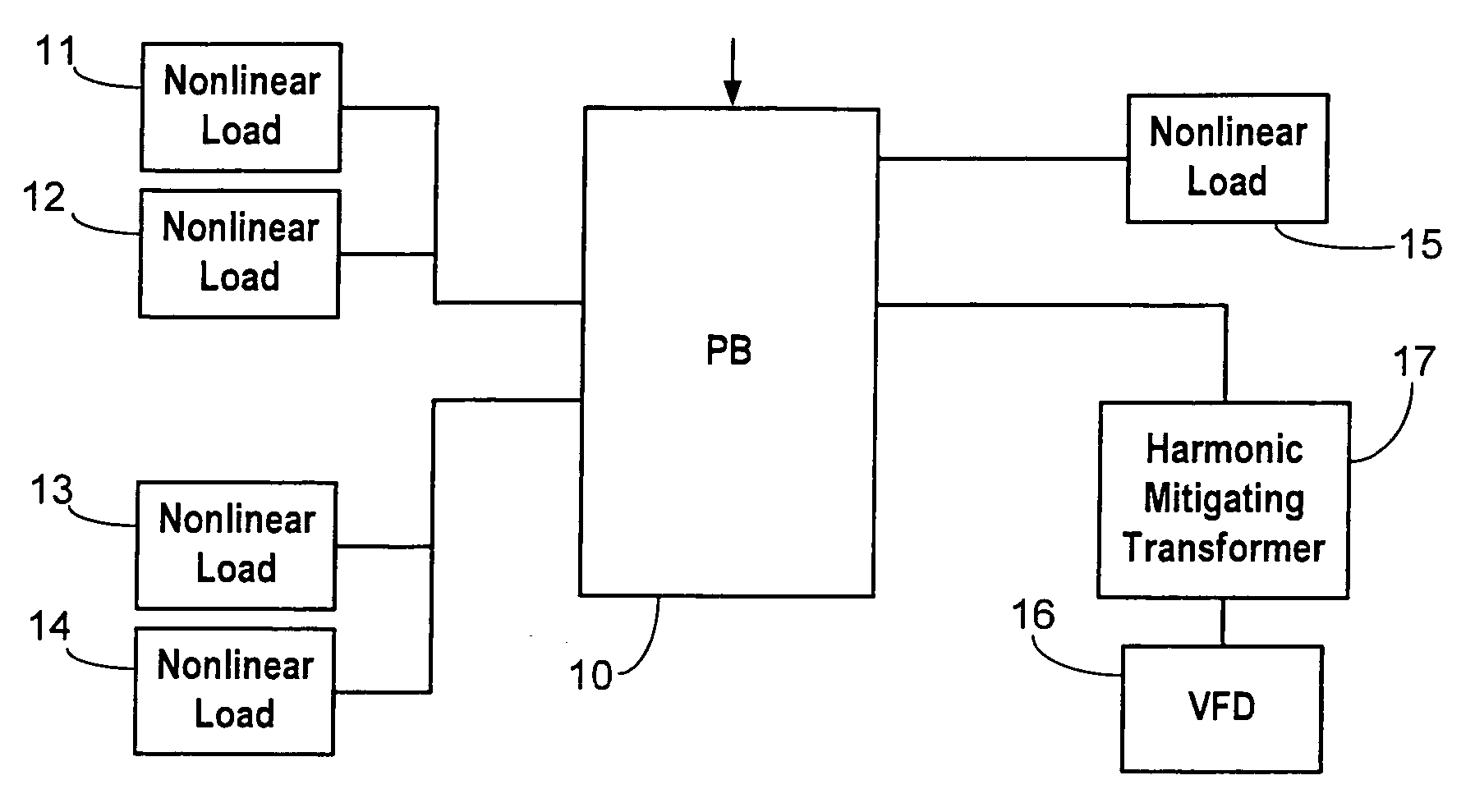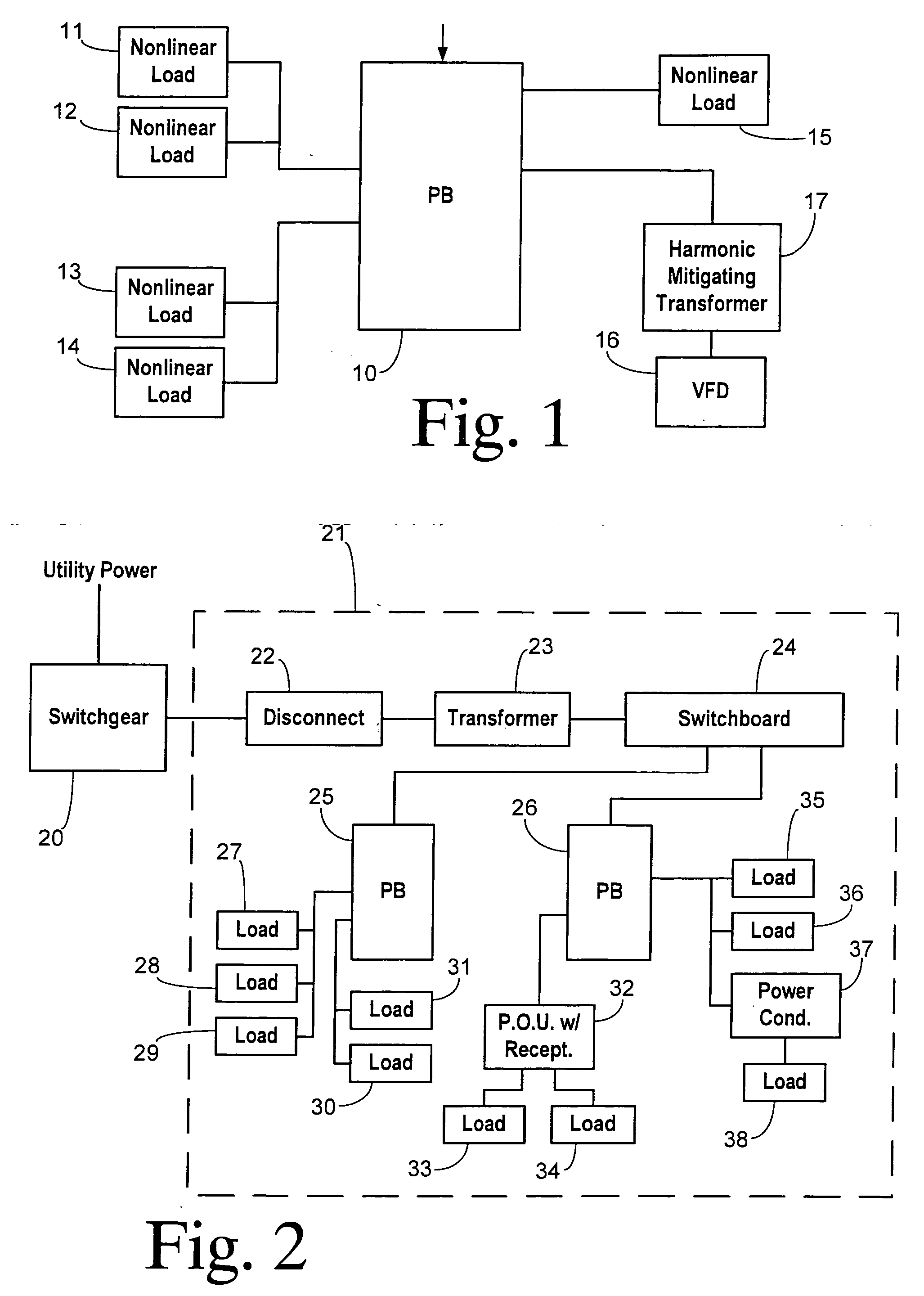AC power distribution system with transient suppression and harmonic attenuation
- Summary
- Abstract
- Description
- Claims
- Application Information
AI Technical Summary
Benefits of technology
Problems solved by technology
Method used
Image
Examples
Embodiment Construction
[0019] Referring now to FIG. 1, an electrical distribution system subject to harmonic distortion problems includes a panelboard 10 coupled to nonlinear loads 11-15. The nonlinear loads can be any arbitrary loads such as electronic lighting ballasts, switching power supplies for computers or other electronic equipment. Another nonlinear load comprises a variable frequency drive (VFD) 16 powered by panelboard 10. It is known to limit harmonic distortion that propagates from a VFD to other devices by introducing a harmonic mitigating device 17 to the electrical distribution system between VFD 16 and panelboard 10. Harmonic mitigating device 17 may typically comprise a transformer (such as a zig-zag transformer for canceling harmonic distortion) or a load reactor or a line reactor, for example. Although the known harmonic mitigating device 17 reduces harmonic distortion that propagates from VFD 16 to other devices, harmonic distortion to or from nonlinear loads 11-15 is not addressed by...
PUM
 Login to View More
Login to View More Abstract
Description
Claims
Application Information
 Login to View More
Login to View More - R&D
- Intellectual Property
- Life Sciences
- Materials
- Tech Scout
- Unparalleled Data Quality
- Higher Quality Content
- 60% Fewer Hallucinations
Browse by: Latest US Patents, China's latest patents, Technical Efficacy Thesaurus, Application Domain, Technology Topic, Popular Technical Reports.
© 2025 PatSnap. All rights reserved.Legal|Privacy policy|Modern Slavery Act Transparency Statement|Sitemap|About US| Contact US: help@patsnap.com



